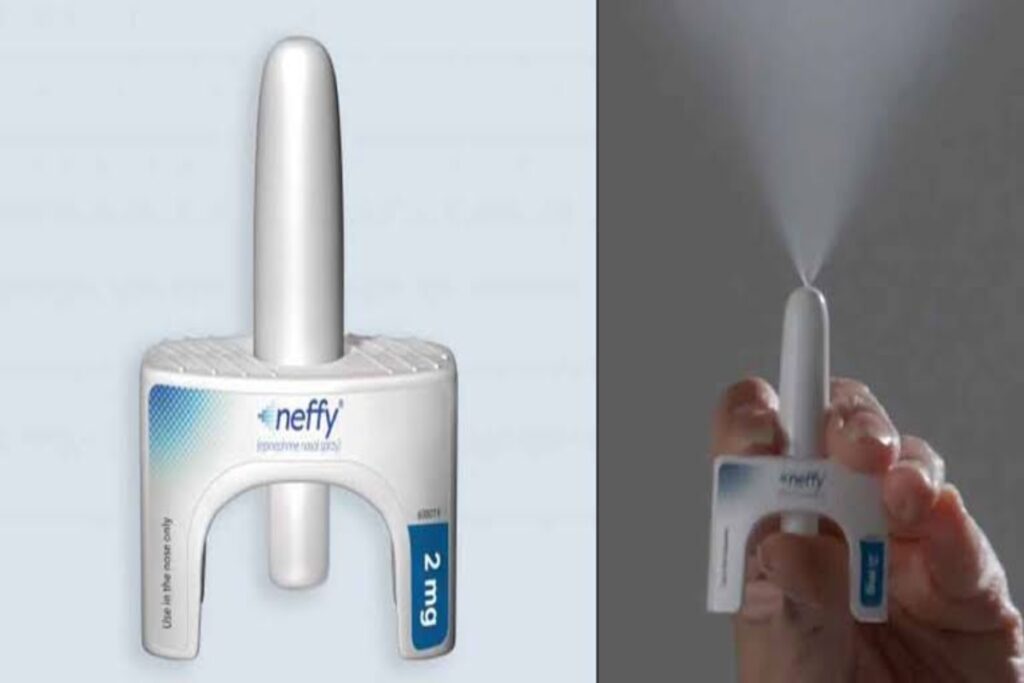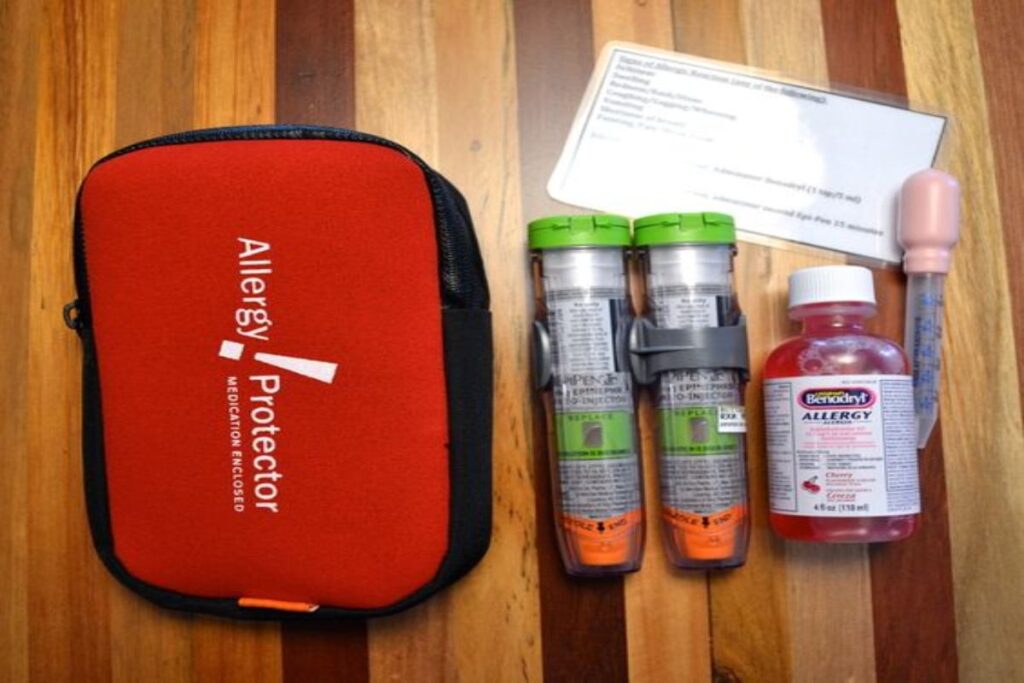
Allergies are without doubt life-threatening if left untreated, either mild or severe. It doesn’t matter if the allergies are a result of food consumption or other sources, such as bee stings. In the United States, Anaphylaxis or severe food allergic reactions, is the leading cause of fatal allergic reactions.
According to a new report, the US Food and Drug Administration approved the first nasal spray epinephrine medication. The medication is intended to treat severe allergic reactions and provide a needle-less option for EpiPens and similar medications.
The US Food and Medication Administration Announcement
On Friday, August 9, 2024, the US Food and Medication Administration released an announcement clearing the medication for adults and children over 66 pounds.
According to a press release by Dr. Kelly Stone, an associate director of the Division of Pulmonology, Allergy, and Critical Care in the FDA’s Center for Drug Evaluation and Research, “Anaphylaxis is life-threatening, and some people, particularly children, may delay or avoid treatment due to fear of injections.”
Stone added, “The availability of epinephrine nasal spray may reduce barriers to rapid treatment of anaphylaxis.” The approval came after studying and recording concentration levels of epinephrine in the blood of 175 healthy adults.
ALSO READ: How to Use Retinol on Your Skin For Better Results
The outcome revealed similar blood pressure and heart rate rises, as well as equivalent values for Neffy and injectable epinephrine. The study observed that the levels of adrenaline in children above 66 pounds were similar to those in adults.

What Is Epinephrine Used For?
Epinephrine, sometimes known as adrenaline, is the first-line treatment for anaphylaxis. It is accessible in an auto-injector with a prescription. When a severe food allergy reaction results in mortality, delaying the use of epinephrine is typical.
Epinephrine counteracts potentially fatal symptoms. Since antihistamines cannot reverse airway swelling or elevate low blood pressure, they are insufficient replacements and will not save your life.
Patients with food allergies should always have their epiPen auto-injector on them, according to allergists. This is vital for those with past anaphylactic reactions, asthma, food allergies, or fish, peanut, tree nut, or shellfish allergies.
Epinephrine reduces the signs and symptoms of an allergic reaction, such as swelling in the face, lips, and throat and difficulty breathing. It also decreases blood pressure by constricting blood vessels and increasing the heartbeat.
POLL—Should the Government Increase Taxes on the Wealthy To Reduce Economic Inequality?

Where To Give Epinephrine Injection?
Depending on the circumstances of the situation, an epinephrine injection can be administered by professionals or individually. However, if it were to be administered at home, one must ensure that the family member understands how to administer it.
Epinephrine is administered by injecting it under the skin or into the muscle of the patient’s outer thigh. However, it is not to be administered by injecting it into a vein, buttocks, muscles, fingers, toes, hands, or feet.
This is because injecting outside the designated places increases the probability of serious side effects.

Can Epinephrine Be Given IV?
Yes, it can be administered IV. Depending on the diagnosis, epinephrine can be administered in several ways. To ensure quick absorption, it is traditionally injected into the thigh muscles. However, it can also be administered via an autoinjector syringe and needle kit, a prefilled syringe, or a vial.
Nevertheless, epinephrine can be administered intravenously or intraosseously for patients with advanced cardiovascular life support (ACLS). This method of administration offers benefits, particularly to patients with pre-existing vascular access.
In comparison with the regular method of thigh injection, the IV method provides a push to increase blood epinephrine levels faster. IV epinephrine infusion offers greater control, allowing for adjustments in the case of adverse events.
In case of a bad reaction, a patient might reduce or stop epinephrine, as the IV doesn’t require immediate medication administration. Consequently, the newly FDA-approved nasal spray provides an alternative method of administration without needles.
WATCH: Clever Hacks That Prevent Crying While Cutting Onions
Can Epipens Be Used in CPR?
Cardiopulmonary resuscitation (CPR) uses epinephrine as its main medication to reverse cardiac arrest. As an alpha-1-adrenoceptor agonist, epinephrine raises arterial blood pressure and coronary perfusion during CPR. However, there is little data to support the recommended dose, time, and indications for use.
Recent research raises doubts about the overall benefits that patients receive from epinephrine. Additionally, laboratory evidence suggests that epinephrine-induced arterial blood pressure increases during CPR may be offset by harmful decreases in microvascular blood flow.
Epinephrine and norepinephrine, similar neurotransmitters and hormones, trigger the fight-or-flight response and have medical uses. Norepinephrine has a greater impact on your blood vessels than it has on your heart. However, adrenaline marginally affects your heart.
You Might Also Like:
Miley Cyrus Named Youngest Disney Legend, Expresses Pride in Her Past As “Hannah Montana”
Easy Egg Peeling Tips and Tricks to Make the Process a Breeze
How to Reduce Your Risk of Knee Arthritis
Halle Berry Turns Up Almost Naked to “The Union” Premiere
Tiffany Haddish Doubles Down on Zimbabwe Grocery Store TikTok Video Amid Heated Backlash
